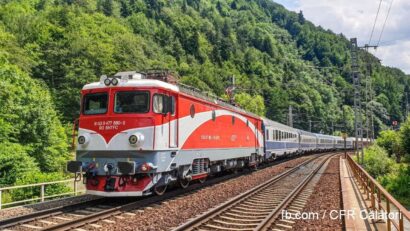The Story of Leather Belts
Crafts are on the verge of extinction

Ana-Maria Cononovici, 20.05.2025, 13:00
Crafts are on the verge of extinction, and that is why the experiences of craftsmen have a fairytale character. This is also the case of Petru Chincea, originally from a village in the Banat de Munte area, who for over 60 years has been working, with the same passion, on belts and other related leather objects, all handmade, as he saw as a child.
Here is Petru Chincea:
“I inherited the job from my grandfather on my mother’s side. My grandfather was a peasant, but he worked at the steel plant, at the rolling mills. And there were belts there, which were thrown away, but they were still good. And my grandfather said to himself, if they are thrown away, what can I do with them? And he started making harnesses for horses. The leftovers from the belts that were thrown away, because the technology at that time was old German technology. And in the evenings my grandfather tried to lure me in, because he wanted his grandson to inherit his passion, because this was a passion, not his job. He was a peasant and a worker at the rolling mills. And in the evenings he worked (making belts). He worked for the people in the village for a fee for a day’s work. And he would tell me, my dear, grandson, come and see how I do it here and your grandfather will reward you. ‘How would you repay me?’, I would ask, and he would say, I will give you one leu, and you can get yourself candy. It was something fantastic!”
Although his father wanted to take him to the factory, the child did not like it, because he saw his father in dirty overalls, as he told Radio Romania. So after finishing 10 years in school, he left Reşiţa for the vocational school that was in Iaşi. He returned to Reşiţa after 3 months to a belt workshop, run by a man who had also worked at the steel plant, at that time the place that trained craftsmen, as we learned from Petru Chincea:
“That’s how I started my job. I stayed at the cooperative for about two years, I had a contract, my father had to sign a five-year contract, but when I left for the army, my thoughts were on the factory, because here the salary was triple that at the cooperative. It was good at the cooperative because there was freedom, you could leave (ed. earlier than the schedule), but the salary was not very good. When I got married before the army, I needed money. My colleagues, belt makers at the cooperative, kept sending signals: you see that man is leaving for Germany, one is retiring, who wants to come from among the shoemakers, from among the belt makers. At the steel plant, belts were made, and transmission belts repaired. And after the army, I went.”
We also found out that, in the beginning there were only Germans and Hungarians in the plant, and only afterwards did Romanians learn the trades. Thus, Petru Chincea told us that in 1987 there were still 14 belt makers, but that the archives showed that after the war there were 40 belt makers.
But since changing times require the ability to adapt, Petru Chincea opened a workshop:
“In 2000, I predicted that the plant would no longer need belt makers, and I set up a small workshop, I started collecting tools, to make them. All the tools were made in the factory, because you had nowhere to go to get them. And in 2001 I opened my own company. I worked 10 hours a day at this workshop. And I regret that I have no one to inherit it, because I have no children and no one wants to come and learn the trade.”
Out of necessity, he also learned to make opinci, the traditional leather shoes, and whatever else was requested, our interlocutor added, admitting that working in his own workshop took up more time than working at the steel mill, and required his adaptability and creativity:
“You need a little creativity, just like a painter, like a sculptor. If opinci were requested, I made opinci, if pocket girdles were requested, I made pocket girdles . These jobs, which are on the verge of extinction, will still be sought after at some point, but there will be no one to work them, because we are not training young people. Young people today are more on the internet, more with technology. I make trouser belts, chimir, that wide belt that shepherds used to use, they put their money in them, or the elderly used to use for field work, back support straps for athletes, or for those who have health problems. Our elderly people had a belt for a reason. What I don’t make is knife sheaths, wallets, dog collars, opinci. The leather is thicker, not the thin leather used by furriers and shoemakers.”
Although belt making was once an essential craft in Romanian villages, with peasants needing durable equipment for work and animals, today, Petru Chincea’s products are appreciated as folk art objects, exhibited at fairs, festivals and sometimes in private collections. Each piece is unique, decorated with traditional motifs, and stitching that tells stories from the Banat region. For the community of Caraș-Severin, Petru Chincea is more than a craftsman – he is a symbol of continuity, a living witness to a world on the verge of extinction, and his workshop thus becomes a place of living heritage.






























